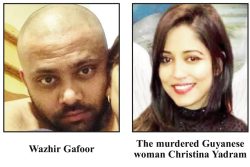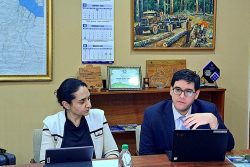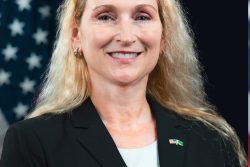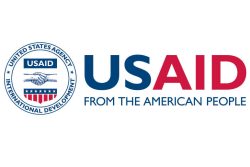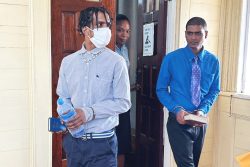Walter B Alexander
Ever since the “Common Entrance” Examination replaced the former County Scholarship Examination in the 1960s there has always been much publicity about the ‘top’ performers. This trend has continued through the years even when the examination became known as the Secondary Schools Entrance Examination (SSEE). By law all Primary Schools pupils who are over 10 years and under 12 years of age by March 31 in the year of the examination are eligible to enter for the examination (with or without their Birth Certificates). In 2013 by which time the examination became known as the National Grade Six Assessment (NGSA) the entries were in excess of 16,000. Also in this year the Ministry of Education succeeded in providing the results relatively early, at the end of the first week in June. Almost immediately we were fed with the glorious performance of the ‘top’ 1 % (about 170 candidates), but we are yet to hear how many candidates got at least half of the work correct. We would like to know more precisely how our Primary Schools as a whole are performing, as we head towards
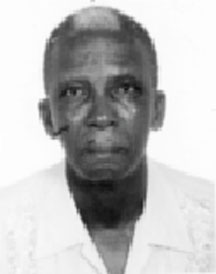
Universal Secondary Education (USE) where every child at the end of Grade Six is offered a place in a secondary school. And the question is whether we should expect and demand more from our education system and also more from our parents.
The need to know more about the results is bound up in the fact that the scores printed on the candidates’ Result Slips are Standardised Scores. It has been stated that this year the maximum possible score was 560. The ‘top’ student scored 548, while the last child in the ‘top’ 1 % scored 524. It is useful to remind parents that the NGSA is essentially a placement examination, and that the Raw Scores are converted into Standardised Scores in order to rank the candidates. Hence, it is totally misleading to calculate a score as a percentage of the maximum 560. Therefore, it should be ascertained whether a score of, say, 420 shows satisfactory performance. Should a parent boast that his/her child made 350, while the neighbour’s child made only 320? In truth and in fact, past Conversion Tables with a possible maximum score of about 560 indicate that a 50 % performance earns a score of about 425. Hence, scores of less than 400 indicate that those students have to really do much remedial work (with emphasis on mastering reading skills) in the early years of the secondary school in order to complete a successful secondary school career. It must not be concluded that once the child has been allocated a place in a secondary school and has graduated with ‘cap and gown’ from the primary school, all is well. Far from it!
Taken as a whole, the NGSA results are a reflection of the primary schools sector. These results also show the total performance of individual primary schools, whether government-owned or privately run. It should be remembered that the examination questions are based upon the primary school curriculum from Grade One to Grade Six. Hence, parents need to pay close attention to their children’s work, including the full completion of homework, from Grade One to Grade Six. There are many parents who begin to show interest in and to give support to the child when he/she is about to enter for the examination. This is late, and often too late. When there are too many lapses and short-comings over the six-year cycle on the part of parents and on the part of the school, including teaching skills and learning resources, the end result is a low mean in each of the four subjects at the national level, at the regional level and at the school level. Let me hasten to point out that it has always been shown that with proper supervision of schools, with the commitment of teachers and the support of parents, outstanding performances can be achieved. Hence, it is heartening to hear when a previous low-performing school improves its performance, secures at least one place in the ‘top schools’ and increases its mean in each subject against the performance of past years and surpasses the regional mean. But lest we get carried away, it must be noted that the mean is always measured out of 60. When the mean is quoted, it is not a percentage. Hence, when the National Mean or the Regional Mean is in the 20s, it clearly indicates that less than half of the candidates are mastering 50 % of the work. This is cause for concern.
Even after a child is allocated to a secondary school in a geographical locale, there is also further cause for concern with regards to the quality of teaching and learning taking place in that secondary school. The variation in quality can be determined by, but not limited to the following: the competence of the headship and senior staff; the availability, competence and stability of staff; the physical facilities of the school, including functional science laboratories with Lab Assistants; the availability and distribution of textbooks, especially in the four core subjects; the support from parents; the NGSA scores of students admitted in the recent past; and the ‘hidden curriculum’ of the school. All things being equal, it does matter how a secondary school is run, because there can be a difference in the quality of teaching and learning taking place: if the school settles down in the first week of the new school year, and from Day One of the two succeeding terms; if Student Reports are completed by the last day of term; and also if the discipline of students is perceived to be acceptable. The public’s perception of a school is gleaned not only from its long history, but also from its external examination results, its co-curricular programme, and the manner in which its public functions are conducted. Hence, we can fully understand why parents want a ‘good’ school for their children, in spite of the fact that not every ugly duckling is a swan. However, schools with limited resources, but with good management, have proven to be successful schools.
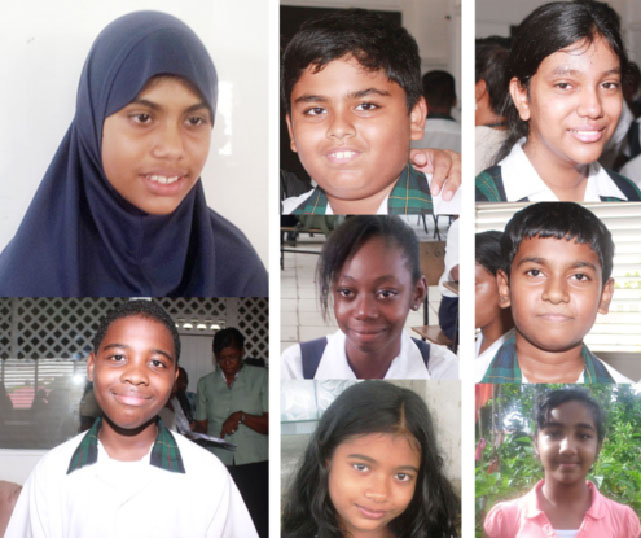
Winners all
During the life of the SSRP (Secondary School Reform Project) from 1996 to 2004 there were twelve Pilot Schools that were selected to implement the initiatives of the project. Ten of these schools which were Community High Schools and Primary ‘Tops” were genuinely converted to Secondary Schools. This conversion was effected through renovations and extension of buildings, provision of science equipment, supply of textbooks for core subjects in Grades Seven, Eight and Nine, and curriculum support by Supervision Team members. After SSRP a number of Community High Schools were baptized Secondary Schools. The conversion of the latter schools is akin to cases in real life where some god-parents (including this writer) never bothered with the god-children after the christening ceremony. With regards to the Pilot Schools, the SSRP under the Director (Dr. Kenneth Hunte) and Administrator (Walter Alexander) had put in place at great expense and great effort Curriculum Guides for every subject in Grades Seven to Nine for all secondary schools. Particular reference can be made to the Practical Activities Guides for Science that were supplied to all secondary schools. However, there must be limitations to what can be achieved in the absence of functioning science laboratories and qualified science teachers. It is apposite to mention that among former students of SSRP converted schools are University of Guyana students. Therefore, when NGSA Results Slips are received, parents have to wonder about the quality of education being offered by the school to which their children are allocated.
With 16,000+ candidates from coastland to the Pakaraimas across the ten Regions and Georgetown there is wide variation in performance at the NGSA. As we head towards USE (Universal Secondary Education), nearly all of the Grade Six pupils are admitted to a secondary school after graduating from their Primary School, but many of them cannot cope with High School work. How many? It should not be an exaggeration to say that half of the Primary School graduates cannot comfortably read at Grade Four level. Recent trends indicate that half of the candidates do not get half of the work right. This is obvious when your score is 400 or less. Therefore, it means that the secondary schools which admit such students must have a structured programme for remedial work in Reading, Basic English and Basic Mathematics, at least in the early forms. Furthermore, those schools must have adequate numbers of textbooks in the four core subjects together with supplementary reading material for individual students. Moreover, the parents of below-average students need to know and accept the truth about their children’s performance, and they need to support the measures being taken by the school to cater for their children’s previous under-performance.
The duty and the responsibility of parents also extend to ensuring that they send to school a disciplined child who is prepared to learn, and to obey the rules and regulations of the school. Of course, discipline includes regular attendance and punctuality. These expectations are not optional, and must not be taken lightly by teachers and students. It must be noted that an orderly school environment is conducive to learning, which in turn will boost student performance and the reputation of the school. The instances of bad behaviour must not be so over-whelming that teachers feel threatened by students. And the teachers must be supported by officers, who must not be reluctant to deal with indiscipline, since the Regional Education Officers have the necessary legal powers delegated to them by the Chief Education Officer according to Circular No. 26 of 1986. Therefore, after receiving the NGSA Results for their child and after deciding on which school the child will be attending, the parent is tacitly entering into an agreement to support the child through school for the next five or six years until that child completes the cycle of secondary education. Of course, this is the ideal situation. In the next five or six years, many of the 16,000+ will fall by the wayside, because in 2018 we will not have 16,000+ candidates writing CSEC examinations, just as how of the 17,000 candidates from 2008 NGSA, several dropped out by this year.
But what information are parents really accepting with respect to the performance of their children at the NGSA? It was stated before in this article that the scores in each of the four subjects are Standardised Scores. These are conversions from the original Raw Scores which range from zero to 60 in each of the four subjects. Further, in English and Mathematics, the performance at Grade Two and Grade Four Examinations is added to that of the Grade Six Assessment in the ratio of 5%, 10% and 85% respectively. Now 5 plus 10 plus 85 would give you 100. And 100% is a whole. But these three percentages are individually of different amounts! Therefore, what is it that we are combining? The teachers in the Primary Schools know that the Grade Two English (with Reading) and the Mathematics are marked out of a maximum of 50. Furthermore, 5% of 50 is 2.5. The range of marks would be 0, 0.5, 1, 1.5, 2, and 2.5, if we are using half-marks. This variation is almost meaningless among 16,000+ candidates. Likewise, when we include 10% of the Grade Four English (with Reading) and the Mathematics which are also both marked out of a maximum of 50, the range of marks would be 0, 0.5, 1, 1.5, 2, 2.5, 3, 3.5, 4, 4.5, and 5. Still almost meaningless in discriminating among 16,000+ candidates. Some clarification is necessary. Furthermore, is it 5% and 10% of the Raw Score or of the Standardised Score? If it is of the latter, do we then standardise the composite scores? Clear unambiguous explanations should be forthcoming, especially for those of us who really understand Mathematics.
Now the long end-of-school-year vacation has begun. Parents have enough time to get their children ready for the new school year. Some will be ready long before September, while some will be frantically securing uniform, etc. during the weekend immediately before the re-opening of school, and some even after school has re-opened. This also helps to make a difference in the achievement of students. And while not every school will be a Queen’s College, or a Bishops’ High School, or a St. Rose’s High School, or even an Anna Regina Multilateral School, each parent needs to know that there is real hope for his child’s future, after registering the child at the school indicated in the NGSA Results slip.
(Walter B Alexander is a Retired Deputy Permanent Secretary in the Ministry of Education and a former Lecturer at the University of Guyana)
